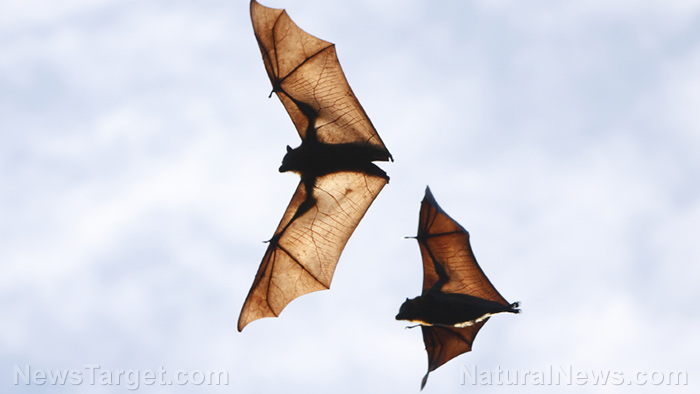
This is now the sixth outbreak of the Nipah virus in India, which reported its first case in 2001.
According to news released by the World Health Organization (WHO), the six new cases were all males aged between nine and 45 years. The first case, whose source of infection could not be determined, died back in August a few days after being admitted to a hospital.
The other five cases were all close contacts of the deceased, two of whom were family members. The rest happened to be at the same hospital where the deceased was treated. A second individual who was only accompanying another patient at the same hospital was reported to have died of the infection.
As of Sept. 27, the four remaining confirmed cases were all declared to be clinically stable. Kerala officials have traced 1,288 people who have had close contact with the six confirmed cases. These included healthcare workers who have come into contact with the patients or their samples. The local government has ordered all to remain in quarantine for 21 days.
Similar to what many countries did during the Wuhan coronavirus (COVID-19) pandemic, officials in Kerala imposed movement restrictions to prevent further spread of the Nipah virus. Nine villages in Kozhikode were declared to be containment zones where schools and offices were forced to shut down. Social distancing and mask-wearing were once again mandated in public places, and public events were restricted.
According to the National Institute of Virology in Pune, India, the recent outbreak was caused by the Indian Genotype (I-Genotype) of the Nipah virus, which bears similarities to the strain reported in neighboring Bangladesh. (Related: Next PLANDEMIC? CDC warns Marburg virus is coming.)
Facts about the Nipah virus
Like the coronavirus responsible for COVID-19, the Nipah virus came from bats, specifically fruit bats from the genus Pteropus known as the flying foxes. The virus is described as zoonotic, meaning it can be transferred from animals to humans. The Nipah virus is related to the Hendra virus, which is known to cause respiratory and neurologic diseases in horses and humans. Like the Nipah virus, the Hendra virus' natural reservoir is the flying fox.
Symptoms of Nipah virus infection in humans range from asymptomatic to mild or severe acute respiratory infection or fatal encephalitis (inflammation of the brain's active tissues). The virus has an incubation period of four to 14 days, although longer incubation periods of up to 45 days have been reported. Initial symptoms of the infection are non-specific, making detection quite challenging.
Infected individuals have reported developing fever, headaches, muscle pain, sore throat and vomiting, followed at times by dizziness, drowsiness, altered consciousness and early signs of acute encephalitis. Others have manifested signs of atypical pneumonia and acute respiratory distress. In severe cases, brain inflammation, which causes the organ to swell, leads to seizures that can progress to coma within 24 to 48 hours.
Based on a tally of reported cases in South and Southeast Asia, the Nipah virus has a case fatality rate of 40 to 75 percent, depending on where the outbreak occurs and local capabilities to handle the disease. There are currently no specific medications or vaccines for the Nipah virus. Treatment options typically include pain management, respiratory support, hydration and rest for mild cases, or intensive supportive care for patients with severe respiratory or neurological symptoms.
Nipah virus outbreaks in Asia
First discovered in Malaysia in 1999, the Nipah virus caused an outbreak among local pig farmers, who caught the disease due to unprotected contact with secretions from infected pigs. The outbreak resulted in 265 cases and 108 deaths. (Related: British government sounds alarm over alleged spread of new killer virus in Europe.)
During this first outbreak, the Nipah virus also spread to neighboring Singapore, which reported 11 infections and one death. Since then, there have been no recorded cases of Nipah in both countries, but outbreaks have been reported almost annually elsewhere.
In 2001, Bangladesh saw its first Nipah outbreak, with a total of 237 reported cases. But unlike what happened in Malaysia, infections occurred without an intermediate animal host (pigs). Instead, they were linked to the consumption of fresh or fermented sap from silver date palm trees contaminated with bat saliva or urine. Human-to-human transmission also took place and helped spread the virus.
That same year, India also reported its first Nipah outbreak in the city of Siliguri in West Bengal, which borders Bangladesh. The virus infected a total of 66 people and killed 45. According to reports, 75 percent of the cases occurred among hospital staff and visitors, suggesting that most of the infections were caused by human-to-human transmission.
Bangladesh has since reported Nipah cases almost every year. Between 2001 and 2012, the virus infected a total of 209 people, 161 (77 percent) of whom did not survive. Meanwhile, India's West Bengal state reported a second outbreak in 2007, which also had a high mortality rate. The Nipah virus killed 70 percent of those infected during the two outbreaks.
The state of Kerala in the southernmost part of India reported its first Nipah outbreak in 2018, which claimed 21 lives. Subsequent cases in 2019 and 2021 were only individual cases, but the latter – a 12-year-old boy – succumbed to the disease due to acute encephalitis. The recent outbreak in Kerala is the first time since 2018 that the virus has managed to infect more than one individual in the state.
On Sept. 27, unconfirmed reports of a Nipah virus outbreak in the city of Cagayan de Oro in the southern part of the Philippines prompted local officials to suspend classes at all levels. The order was issued after several students and personnel from different universities and colleges in the city reported "flu-like" symptoms that included fever, coughs and colds.
The Philippine Department of Health quickly assuaged fears of a Nipah outbreak the following day, noting that the symptoms exhibited by infected individuals were typical of common viral infections. Nevertheless, the agency has ordered surveillance to monitor possible cases.
Although the Philippines has not confirmed a single case of Nipah infection, it reported an outbreak of the related Hendra virus in 2014. Like Nipah, this henipavirus is transmitted by fruit bats and can cause severe encephalitis. The case fatality rate among those who developed acute encephalitis was reported to be 82 percent.
Read more stories about viral outbreaks at Plague.info.
Watch the following video to learn more about the Nipah virus.
This video is from the The Prisoner channel on Brighteon.com.
More related stories:
Chlorine dioxide found to halt African swine fever virus: STUDY.
UK public health authorities incite fresh fears about tick-borne brain disease virus.
Marburg virus kills 5 in Tanzania; over 100 feared to be infected.
Sources include:
Please contact us for more information.






















